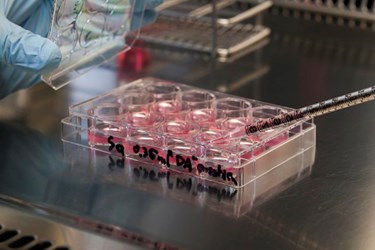Experimental Stem Cell Treatment Cleared For First Human Trial
By C. Rajan, contributing writer

Japanese researchers at the RIKEN Center for Developmental Biology (CDB) have prepared a potential treatment using stem cells to treat degenerative eye diseases, and they are set to begin testing the treatment on the first human patient very soon.
The treatment was developed by Masayo Takahashi, an ophthalmologist at the CDB, and her team. The researchers will be using a treatment procedure based on induced pluripotent stem cells (iPS) on a Japanese patient with age-related macular degeneration (AMD). A health-ministry committee has approved the necessary safety tests and cleared the team to begin the experimental procedure.
Induced pluripotent stem cells (iPS) are produced from adult cells, thus avoiding the ethical concerns associated with embryonic stem cells. They are called 'pluripotent' due to their ability to differentiate or convert into any cell type in the body. Thus, they can be genetically tailored for developing treatments for various diseases. This will be the first trial using iPS cells to test their clinical value in AMD.
AMD causes progressive abnormalities and degeneration in the macula, within the retina of the eye. Those with the condition have extra blood vessels grow in the eye, destabilizing the supportive base layer of the retina known as the retinal pigment epithelium and causing the loss of the light-sensitive photoreceptors located in the epithelium. The condition ultimately results in blindness.
As a possible remedy for this retinal damage, Takahashi explored using the powerful iPS cells to create healthy retinal cells. The researchers took skin cells from people with the disease and converted them to iPS cells. These cells were then treated with appropriate differentiating factors and coaxed into becoming retinal pigment epithelium cells. The newly created retinal cells were then grown into thin sheets that could be implanted onto the damaged retina.
Takahashi and her collaborators tested these stem cells in monkey studies and found that the iPS cells created from the recipients' own cells were safe from rejection by the immune system. While some concerns linger about the ability of stem cells to cause tumors and mutations, Takahashi's team has found that to be unlikely in mice and monkeys. The team also performed additional tests of genetic stability to confirm the safety of the iPS cells in clinical use.
As the final step towards getting regulatory clearance for the clinical trial, Takahashi's treatment procedure was evaluated by a 19-member health-ministry committee. Takahashi was also supported by the Japanese scientist who pioneered the work on iPS cells and received the 2012 Nobel Prize, Dr. Shinya Yamanaka.
The team is now cleared to use the iPS cells and plans to surgically implant them into a trial participant within this month. The actual transplantation procedure will be performed by a surgeon at the Institute of Biomedical Research and Innovation. The team plans to monitor the cell recipient for one year after the operation. Following successful results, the pilot study will eventually involve six participants.
Several other stem cell therapies are in development around the world, however few are ready for commercial use yet. The U.S. FDA approved the first embryonic stem cell-based treatment for acute spinal cord injury to move into Phase I clinical trials in 2009. British biotech company ReNeuron was approved in 2010 to conduct a Phase I clinical trial of a neural stem cell treatment for stroke.
